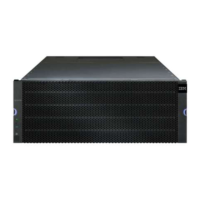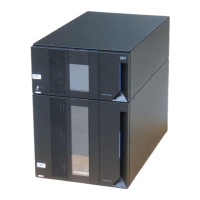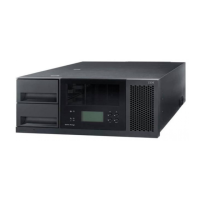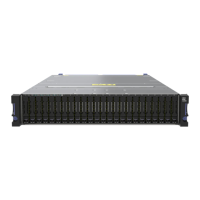Parameter Description
T10PI The setting to specify that an subsystem, and the logical
drives within the subsystem, has T10 PI (Protection
Information) protection to make sure that the data
maintains its integrity. When you use this parameter,
only protected drives can be used for the subsystem.
These settings are valid:
v none - The subsystem does not have T10 PI (Protection
Information) protection.
v enabled - The subsystem has T10 PI (Protection
Information) protection. The subsystem supports
protected information and is formatted with protection
information enabled.
The default value is enabled if the disk pool is T10 PI
(Protection Information) capable.
existingRepositoryLabel This parameter applies only for thin provisioning. If you
use the existingRepositoryLabel parameter, you must
not use the newRepositoryCapacity parameter.
newRepositoryCapacity The size of the logical drive that you are creating. Use
this parameter only if you see the value of the
thinProvisioned parameter to TRUE.
Size is defined in units of MB, GB,orTB. The following are
examples of the syntax:
v capacity=500MB
v capacity=2GB
The default value is 50% of the virtual capacity.
warningThreshold Setting this value to zero disables warnings.
The default value is determined by the controller
firmware.
repositoryExpansionPolicy
v automatic
v manual
cacheReadPrefetch
v TRUE
v FALSE
Notes
Each logical drive name must be unique. You can use any combination of alphanumeric characters,
underscore (_), hyphen(-), and pound (#) for the user label. User labels can have a maximum of 30
characters.
For thin logical drives, the capacity value specifies the virtual capacity of the logical drive, and the
repositoryCapacity specifies the capacity of the logical drive created as the repository logical drive. Use the
existingRepositoryLabel to specific an existing unused repository logical drive instead of creating a new
logical drive.
For best results when creating a thin logical drive, the repository logical drive must already exist or must
be created in an already existing disk pool. If you do not specify some of the optional parameters when
creating thin logical drives the storage management software will attempt to create the repository logical
drive. The most desirable candidate logical drive is a repository logical drive that already exists and that
Chapter 3. Script Commands 3-99

